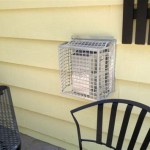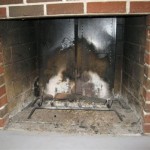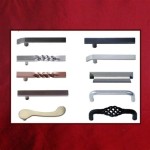Small Square Fireplace Screen: A Detailed Examination
The selection of a fireplace screen is a crucial aspect of maintaining both the safety and aesthetic appeal of a hearth. Among the various designs available, the small square fireplace screen stands out as a practical and visually versatile option, particularly suitable for smaller fireplaces or those seeking a minimalist aesthetic. This article will provide a detailed examination of the small square fireplace screen, covering its design considerations, material options, functional benefits, and factors to consider when making a purchase.
Design and Dimensions
The defining characteristic of a small square fireplace screen is its compact, geometric shape. Typically, these screens are designed with equal height and width, creating a balanced and symmetrical appearance. The dimensions of a "small" square fireplace screen can vary, but generally, they range from 24 inches to 36 inches in both height and width. This size is ideal for smaller fireplace openings, stoves, or for those who prefer a more understated screen that doesn't dominate the room's visual space.
The square design lends itself well to a modern or contemporary aesthetic. Its clean lines and uncluttered form contribute to a sense of order and simplicity. However, the inherent simplicity of the square can also be seamlessly integrated into more traditional settings, depending on the material and finish chosen. The open area inside the frame can be filled with different mesh patterns, from simple wire mesh to more decorative designs, impacting overall aesthetics and the level of spark protection.
Beyond the basic square shape, variations exist. Some screens incorporate slight curves or embellishments, such as decorative handles or scrollwork, along the top or bottom edge. These additions can soften the angularity of the square and add a touch of visual interest. The feet of the screen can also vary, ranging from simple, straight legs to more decorative curved or ball-shaped feet, influencing the screen's stability and overall style.
Material Considerations
The material composition of a small square fireplace screen significantly impacts its durability, heat resistance, and aesthetic appeal. Several materials are commonly used in their construction, each with its own set of advantages and disadvantages.
Steel: Steel, particularly wrought iron and stainless steel, is a popular choice due to its strength, durability, and ability to withstand high temperatures. Wrought iron offers a classic, rustic look, while stainless steel provides a more modern and sleek appearance. Steel screens are typically coated with a heat-resistant paint or powder coating to prevent rust and corrosion and to enhance their aesthetic appeal. The gauge of the steel used will play a critical role in its longevity.
Cast Iron: Cast iron is another durable option, known for its excellent heat retention properties. Cast iron screens are often heavier than steel screens, providing added stability. However, cast iron is more prone to rust if not properly treated; it also tends to be more brittle and can be damaged if impacted. Intricate designs can be easily cast into iron, adding to the decorative quality.
Brass: Brass screens offer a touch of elegance and sophistication. Brass is a relatively soft metal, so it's often used as a decorative element rather than the primary structural component. Brass accents or entire brass screens can add a warm, luxurious feel to the fireplace. However, brass requires regular polishing to maintain its shine and prevent tarnishing. Solid brass options can be very expensive and may be paired with other more durable metals for structural integrity.
Mesh Materials: The mesh used in the screen is equally important. The mesh is what actually prevents sparks from escaping the fireplace. Steel mesh is common and offers good protection. Finer mesh provides greater spark protection. Consider the mesh's weave. Tightly woven mesh will catch more sparks, but also restrict airflow, so finding the right balance is important.
Functional Benefits and Safety Features
A small square fireplace screen provides several functional benefits, primarily focused on safety and protection from fire hazards.
Spark Protection: The primary function of a fireplace screen is to prevent sparks and embers from escaping the firebox and potentially igniting flammable materials in the surrounding area. The fine mesh of the screen acts as a barrier, containing the sparks and preventing them from landing on carpets, furniture, or clothing. This is especially important in homes with young children or pets, who may be more vulnerable to burns or fire hazards.
Heat Dissipation: While the screen prevents sparks from escaping, it also allows heat to radiate into the room. The metal construction of the screen conducts heat, providing a comfortable and efficient source of warmth. The open design of the square screen allows for adequate airflow, ensuring that the fire receives sufficient oxygen for combustion. However, be cautious in direct proximity to the screen when the fire is burning intensely, as the metal can become very hot.
Protection from Rolling Logs: Fireplace screens act as a physical barrier that also prevents logs from rolling out of the firebox, preventing coals or potentially fire from spreading onto the floor of the room. This is a significant safety measure, particularly for fireplaces that are prone to uneven burning or log shifting. The screen provides a secure containment area for the fire, minimizing the risk of accidents.
Aesthetic Enhancement: Beyond its functional benefits, a small square fireplace screen can significantly enhance the aesthetic appeal of a fireplace. The screen can serve as a decorative element, complementing the overall style of the room. A well-chosen screen can add a touch of elegance, sophistication, or rustic charm, depending on the design and materials used.
Factors to Consider When Purchasing
When selecting a small square fireplace screen, several factors should be considered to ensure a proper fit, optimal functionality, and long-lasting performance.
Fireplace Dimensions: The most crucial factor is the size of the fireplace opening. The screen should be wide enough and tall enough to cover the entire opening, preventing sparks from escaping. It is recommended to measure the width and height of the firebox accurately and choose a screen that is slightly larger than these dimensions. Ideally, there should be an overlap of at least a few inches on each side to ensure adequate protection.
Material and Construction Quality: The material and construction quality of the screen are essential for its durability and safety. Opt for screens made from sturdy materials, such as steel or cast iron, with a heat-resistant finish. Check the welds and joints to ensure they are strong and well-constructed. The mesh should be tightly woven and securely attached to the frame. A well-made screen will withstand the rigors of regular use and provide years of reliable service.
Style and Design: The style and design of the screen should complement the overall aesthetic of the room. Consider the existing décor, including the fireplace surround, furniture, and color scheme. Choose a screen that enhances the room's style and adds a touch of visual interest. Whether it's a modern, minimalist design or a more traditional, ornate style, the screen should blend seamlessly with the surrounding environment.
Safety Features: Look for screens with added safety features, such as sturdy feet to prevent tipping, handles or knobs for easy handling, and a mesh that is resistant to sparks and embers. A screen that is easy to move and adjust will make it easier to tend to the fire and maintain a safe environment. Also, make sure the screen meets any applicable safety standards or certifications.
Maintenance and Cleaning: Consider the ease of maintenance and cleaning. Screens with a smooth, non-porous surface are easier to clean and maintain. Regularly wiping down the screen with a damp cloth will help prevent the buildup of soot and ash. Depending on the material, occasional polishing may be required to maintain its shine and prevent tarnishing. Check the manufacturer's recommendations for proper cleaning and maintenance procedures.
Price and Value: While price is a consideration, it should not be the sole determining factor. Investing in a high-quality screen that offers superior protection and durability is often more cost-effective in the long run. Compare prices from different retailers and consider the features, materials, and construction quality when evaluating the overall value of a screen. A well-made screen will provide years of reliable service and enhance the enjoyment of your fireplace.
By carefully considering these factors, one can select a small square fireplace screen that meets their specific needs and preferences, providing both safety and aesthetic enhancement to their home.

Ping For Fire Screens The New York Times

Ledge Glass Fireplace Screen Reviews Cb2

Extra Small Fireplace Screens Pottery Barn

51 Decorative Fireplace Screens To Instantly Update Your

Fireplace Screens Doors Hearth Pottery Barn

Fireplace Glass Doors Vs Screens Full Service Chimney

Salonmore Iron Thin Line Rhombus Fireplace Screen Small Grid Double Door Square Wrought Black Com

Fireplace Doors The 1 Glass Door Experts

Fireplace Screens Doors Hearth Pottery Barn

Modern Fireplace Accessories West Elm
Related Posts








